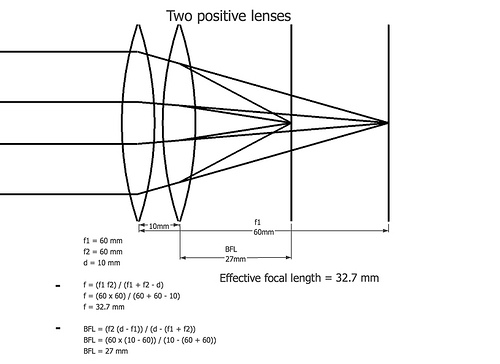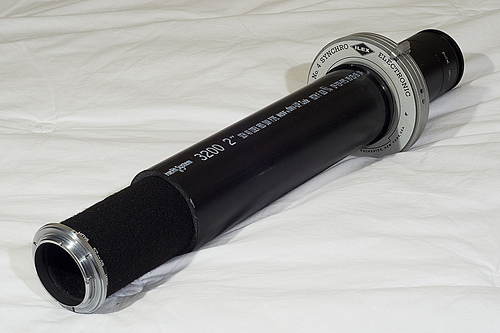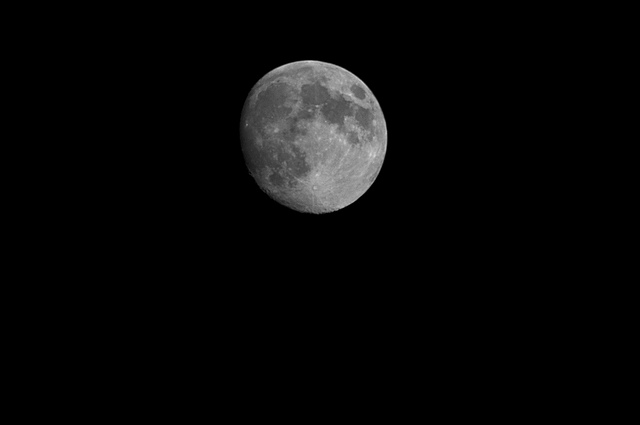www.johnnyoptic.com: Homemade Telephoto Lenses
Telephoto
The word telephoto has come to mean long focal length, however that is not the original (nor correct) meaning
of the word. But before I try to clarify the definitions, let me back up a few steps to discuss some theory, particularly
as it relates to homemade lenses.
Focal length and back focal length
Hopefully, you've read my Homemade Lens Primer,
in which I discuss the topics of focal length and back focal length. Photographers intuitively understand focal length.
For a given object, at a given distance, focal length determines the size of the image of the object on the film or sensor.
The longer the focal length, the larger the image size.
Back focal length is the distance from the rear element of the
lens to the film/sensor when the with the lens focused at infinity. For a single element lens, the focal length and back focal
length will be the same. However, when you combine two or more lenses, things get much more interesting.
First a little Math
The general formulas to compute the effective focal length (F) and back focal length (BFL) of two lenses are:
F = (f1 x f2) / (f1 + f2 - d)
BFL = (f2 x (d - f1)) / (d - (f1 + f2))
where f1 is the focal length of lens #1, f2 is the focal length of lens #2, and d is the distance between the lenses.
Note that f1 and f2 can be either positive or negative.
Copyright (2009-2012) John Swierzbin
www.johnnyoptic.com: Homemade Telephoto Lenses
Let's Plug In Some Numbers
Let's look at the resulting F and BFL values for some combinations of two lenses.
Keep the formulas in mind:
F = (f1 x f2) / (f1 + f2 - d)
BFL = (f2 x (d - f1)) / (d - (f1 + f2))
| # |
LENS #1 |
LENS #2 |
DIST |
F |
BFL |
|
| 1 |
100 |
100 |
0 |
50 |
50 |
|
| 2 |
100 |
100 |
50 |
67 |
33 |
|
| |
| 3 |
100 |
200 |
50 |
80 |
40 |
|
| 4 |
200 |
100 |
50 |
80 |
60 |
|
| |
| 5 |
-200 |
100 |
50 |
133 |
167 |
Retrofocus |
| 6 |
100 |
-200 |
50 |
133 |
67 |
Telephoto |
Lines 1 and 2 show the affect of the distance between the element when using two positive lenses.
Lines 3 and 4 show how the focal lengths affect the results when using two positive lenses.
Things get much more interesting when one of the lenses has a negative focal length.
If the light passes through the negative lens first, we get a combination in which the focal length is less than the BFL (Line 5).
This retrofocus comfiguration is useful for making wide angle lenses.
If the light passes through the positive lens first, we get a combination in which the focal lemgth is longer than the BFL (Line 6).
This telephoto comfiguration is useful for making long focal length lenses.
Retrofocus and Telephoto
When I wrote the Homemade Lens Primer, my goal was to make a wide angle lens with enough BFL to work with my DSLR.
As is typical for wide angle lenses, I needed the BFL to be greater than the focal length.
(For example: a lens with a focal length of 40 mm and a BFL of 75 mm).
The solution was a retrofocus design in which the front element has a negative focal length and the rear
element has a positive focal length.
The front (negative) element is double concave, plano-concave or negative meniscus, and the rear (positive) element
is double convex, plano-convex or positive meniscus.
When making a lens with a very long focal length, we have the opposite problem. We want the BFL to be less than the focal
length so that our lens is not awkwardly long. The solution is the telephoto design (and now I'm using the
proper definition) with a positive front element and a negative rear element.
In this case, the front (positve) element is double convex, plano-convex or positive meniscus, and the rear (negative) element
is double concave, plano-concave or negative meniscus.
Copyright (2009-2012) John Swierzbin
www.johnnyoptic.com: Homemade Telephoto Lenses
Building a Telephoto Lens
Let's take an example. A while back, I had made a single element 400 mm lens with a long sliding-tube focuser.
Now I want to make a lens with an even longer focal length using the same sliding tubes. I'm limited by the lenses I have on hand.
I happen to have a positive lens with a focal length of 191 mm and a negative lens with a focal length of -167. That should work.
To find the right distance between the lenses, I could plug these values into the BFL formula, along with a desired BFL of about
400 mm, and solve for d. But today I feel more like "doing" than "thinking", so with a little trial and error,
I came up with a distance that allows me to attain focus on distant objects. I measured the distance at 75 mm.
According to the formulas this should give me a 625 mm lens with a 380 mm back focal length.
Here's a photo of the lens, complete with a Nikon mount, sliding-tube focuser and an old iris diaphragm. The front element
is a +191 mm lens. The rear element is a -167 mm lens. And there is 75 mm separating them.
Results
Here's a sample image from my homemade telephoto lens.
The focal length is a bit less than the 625 mm that is predicted by the formula. The size of the lunar image is slightly
smaller than one I shot using a 600 mm mirror lens, so I'll estimate its actual focal length at about 575 mm. And of course,
the image is not particularly sharp. To get the best possible image, I closed down the diaphragm to a point just before the
diffraction became objectionable. There was a large amount of false color due to uncorrected chromatic aberration. I was able
to compensate for that somewhat by using only the green channel to make a monochrome image. Finally, I did a little gentle
sharpening in PS. The image is still not as good a straight-out-of-the-camera image using a commercial 600 mm mirror lens,
but as a demonstration of the telephoto design, I'll take it for now.
Copyright (2009-2012) John Swierzbin


